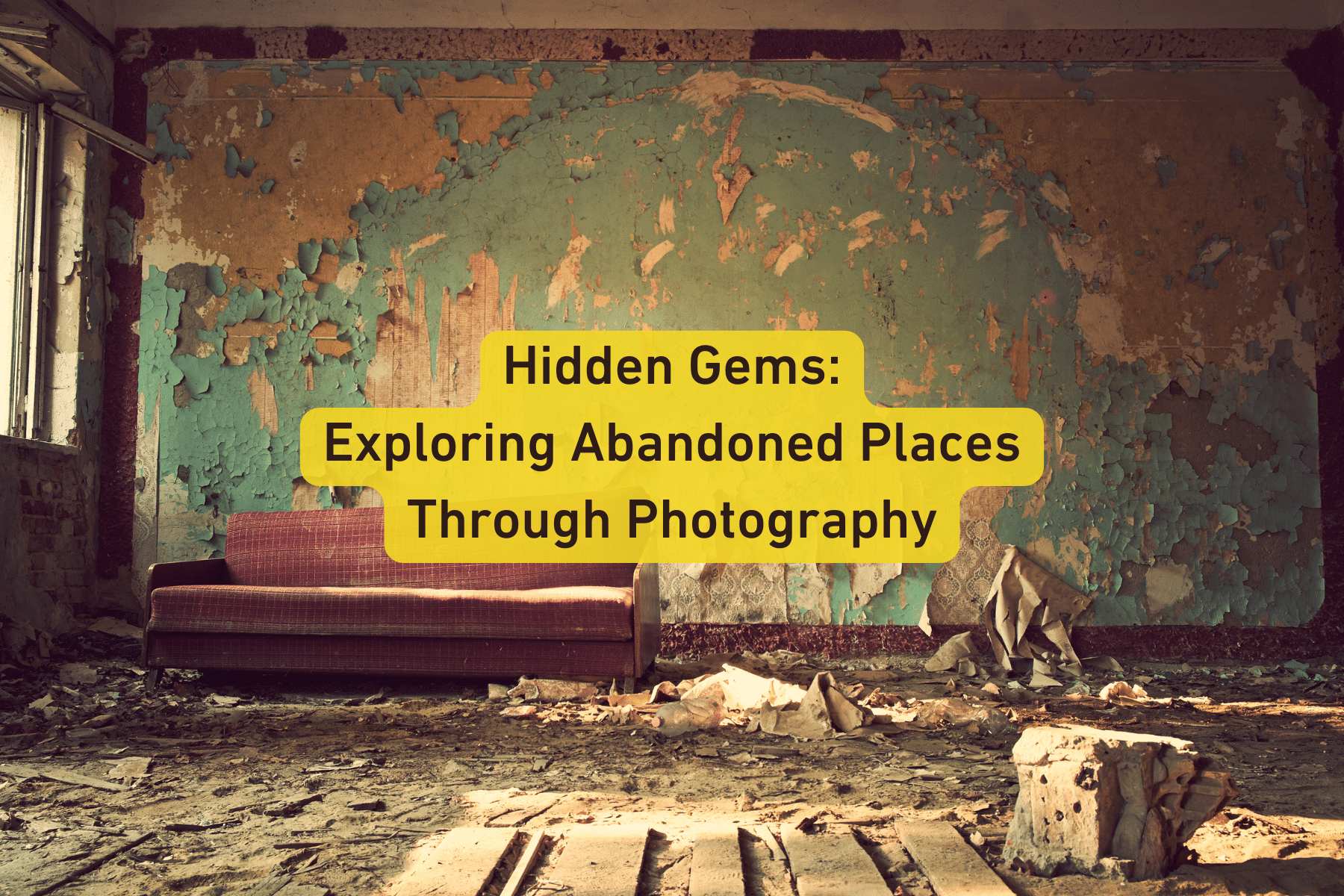Imagine you're standing at the threshold of an old, decrepit building. The door creaks open, revealing a world frozen in time, untouched by the hustle and bustle of the modern era. This, my friends, is the magic of abandoned places. They're more than just forgotten structures; they're living, breathing time capsules, preserving stories of the past. Abandoned buildings, factories, and forgotten places have a gravitational pull that draws people in.

The Allure of Abandoned Places
Whether you find yourself in the eerie charm of a derelict mansion with its faded grandeur or the rugged allure of a decaying industrial site, these hidden gems offer photographers a canvas brimming with history, art, and mystery.
The allure of abandoned places isn't just about capturing their visual aesthetics, although that's a significant part. It's all about reaching back in time, immersing yourself in the footsteps of those who once roamed these same halls, and reviving their tales through your lens. With your trusty camera, you step into the roles of both storyteller and historian, armed with the ability to resurrect the essence of these overlooked places.
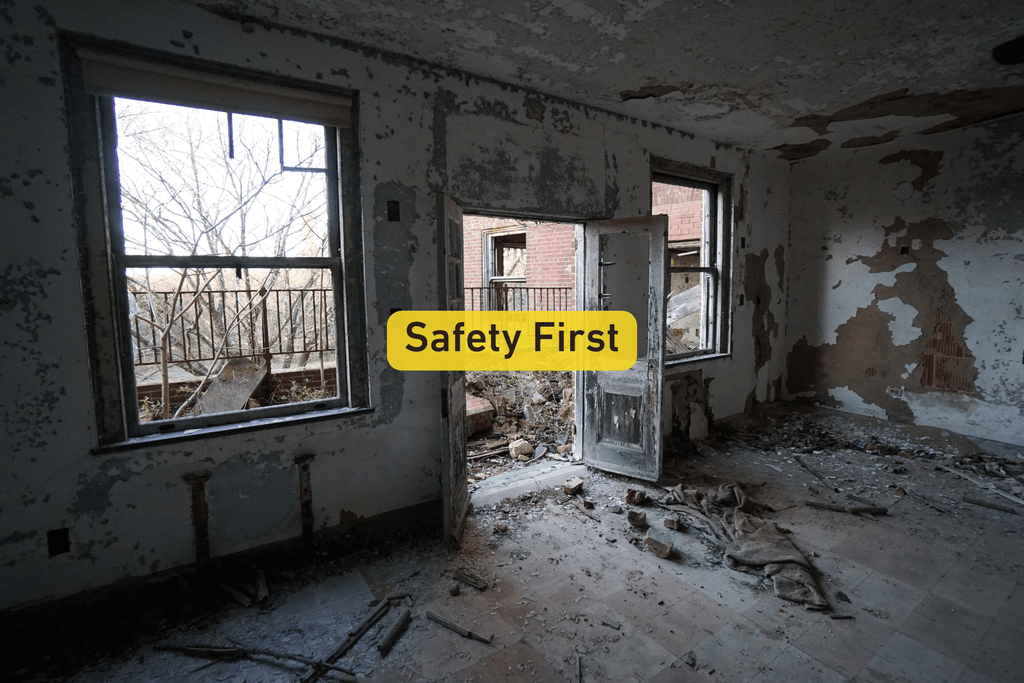
Safety First
As much as exploring abandoned places seems exciting, remember that safety must come first.
To begin with, resist the urge to dive into an abandoned site without the proper permissions. There's usually a good reason these places are off-limits, and sneaking in can get you into real trouble. So, check local regulations, contact property owners, or find legal access points. It's not just about protecting yourself legally; it's about respecting these locations.
Next up, gear up like you're prepping for a day in the field. Abandoned places can be treacherous terrain, so wear appropriate clothing and footwear. Sturdy shoes and long pants are a must to protect your limbs from sharp debris and potential critters that may have moved in. Remember to pack some gloves, too; you'll be grateful for them when navigating through rusty, jagged obstacles.
Now, let's cover the essential safety gear. Depending on the location, consider carrying a dust mask or a respirator to protect your lungs from floating particles. Also, a headlamp is a real game-changer because these abandoned spots are often dark, and you want to ensure you get all the intriguing details hidden in the shadows.
Lastly, toss a first-aid kit in your bag. Accidents can quickly happen when you are in unfamiliar places, and it's a good idea to be ready for minor scrapes and bumps. It's also wise to let someone know where you're off to and when you plan to return – an essential safety precaution that gives peace of mind.

Choosing the Right Location
Picking the perfect abandoned location is where the real adventure begins. It's like selecting the treasure map that'll lead you to a chest of photographic gems.
Take the time and do some research. Check online forums, photography groups, and historical records. These are all sources that can provide you with valuable insights into potential locations.
When choosing an abandoned location, consider what sparks your curiosity. Are you interested in the eerie hallways of a deserted asylum, or perhaps a ghost town, with its silent streets, weathered facades, and a sense of life once bustling, now frozen in time? The rule of thumb? The more unique, the better!
Now, dig into its history as you narrow down your pick for the perfect location. Who were the folks that used to call this place home or toil away within its walls? What events shaped the destiny of these structures? The more you know, the better equipped you'll be to tell their story through your photographs.
Related article: How to Tell a Story with Your Photos
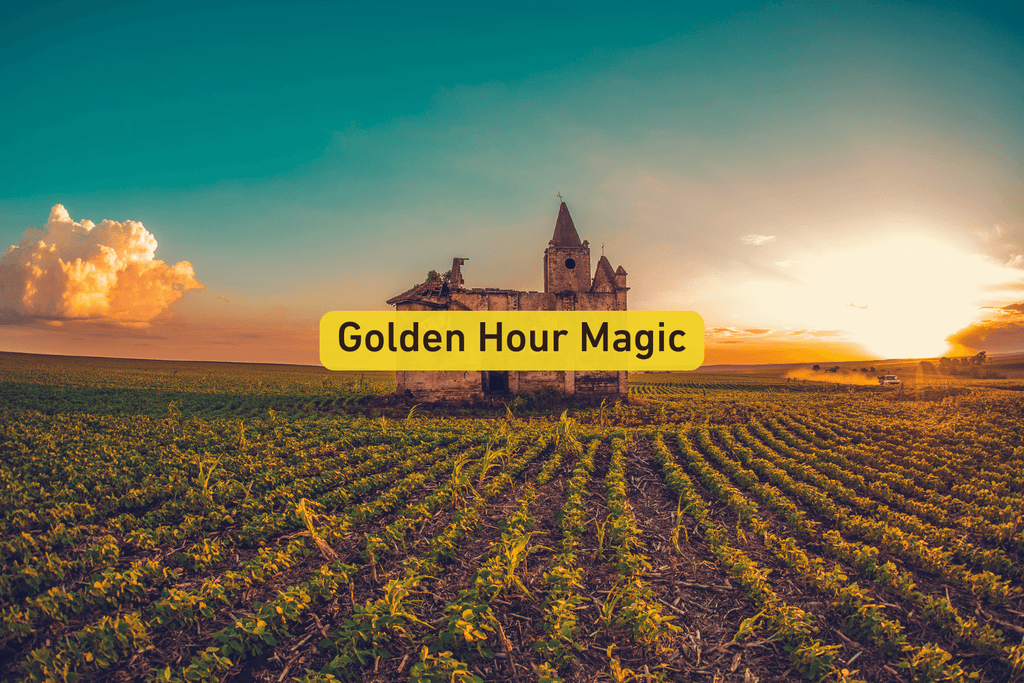
Golden Hour Magic
As any seasoned photographer will tell you, lighting is everything. And when it comes to capturing the soul of abandoned places, there's no time quite like that sweet spot just after sunrise or right before sunset.
During the golden hour, the sun washes the landscape in a warm, diffused light, casting long, soft shadows and painting everything with a breathtaking, golden glow. The interplay of light and shadows enhances textures and draws out the details in peeling paint, rusted metal, and broken glass.
Related article: Textures: The Unsung Heroes of Composition
One of the best things about the golden hour is that it provides a natural filter for your shots. The colors become warmer, and the contrast is just right.
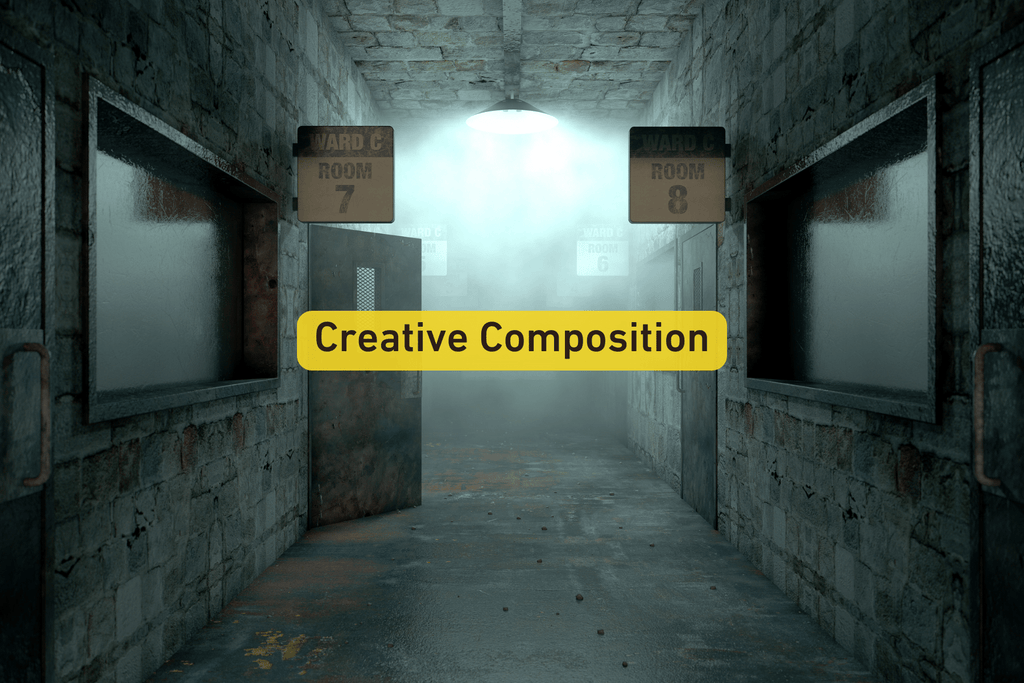
Creative Composition
Experiment with different angles, perspectives, and composition techniques.
Start by getting up close and personal with the details. Capture the weathered door, the intricate patterns of rust on a piece of machinery, or the shards of broken glass glinting in the soft light. These close-ups help reveal the beauty hidden within the creepy decay.
Related article: Close up Photography: How to Take Stellar Close-Up Shots
Explore the vastness of the space around you. Frame your shots to include dramatic doorways that beckon you deeper into the mystery, empty hallways that echo with the ghosts of the past, or graffiti-covered walls that serve as vibrant canvases.
Remember the shadows. Shadows can add drama, depth, and contrast, while the soft, diffused light can turn the mundane into the magical. It's all about finding that sweet spot where the elements align to tell a compelling story.
Also, feel free to get low or high. Crouching down or climbing up can reveal unique angles that give your shots a fresh perspective.
And, of course, it's all about trial and error. Take multiple shots, change your camera settings, and see what works best. Abandoned places have so much to offer; it's a treasure trove of creativity waiting for you to explore.
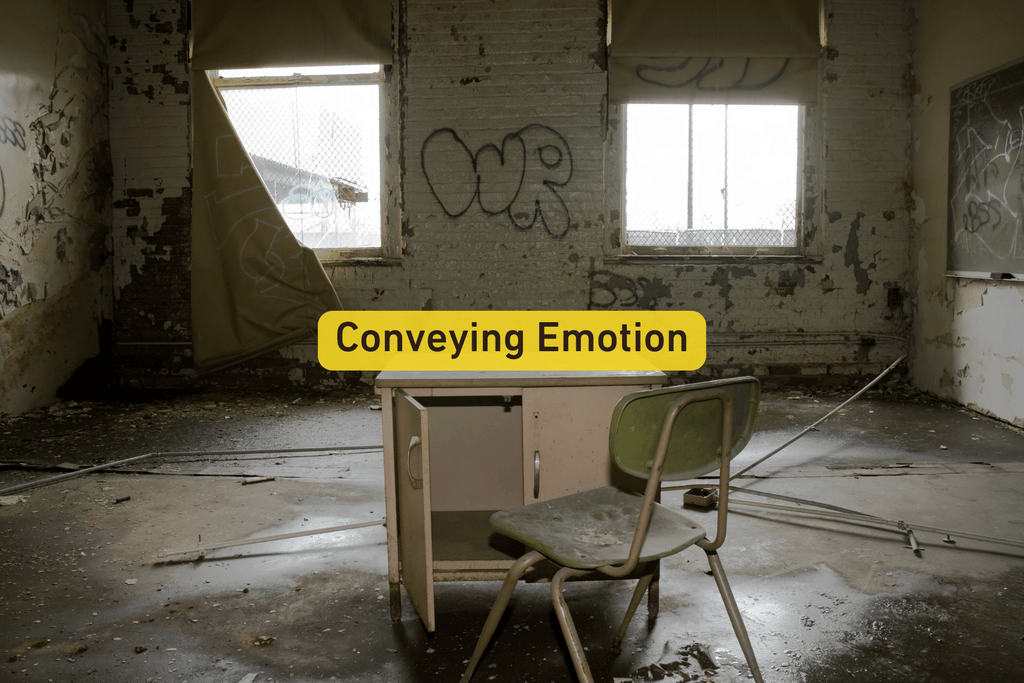
Conveying Emotion
When you enter these forgotten realms, you enter a world of emotions – silent and haunting.
So, how do you capture these emotions in your shots? It's about more than just aesthetics; it's about crafting images that evoke feelings, nostalgia, mystery, and even a hint of eeriness.
Start with the silence. There's something profoundly moving about the quiet that envelops abandoned places. The silence echoes with the laughter, conversations, and footfalls of people long gone. Use your camera to convey this stillness.
Decay is another emotional element to explore. Photograph the crumbling ceilings and the weathered wood. These are visual metaphors for the transient nature of all things, and they can trigger contemplation and introspection in your viewers.
And then there are the forgotten stories. Abandoned places are like vaults filled with narratives left behind by those who once inhabited them. Find those relics – a lone chair in a decaying room, a forgotten child's toy tucked in a corner, or a discarded love letter beneath a layer of dust. These objects can add layers of depth to your photographs.
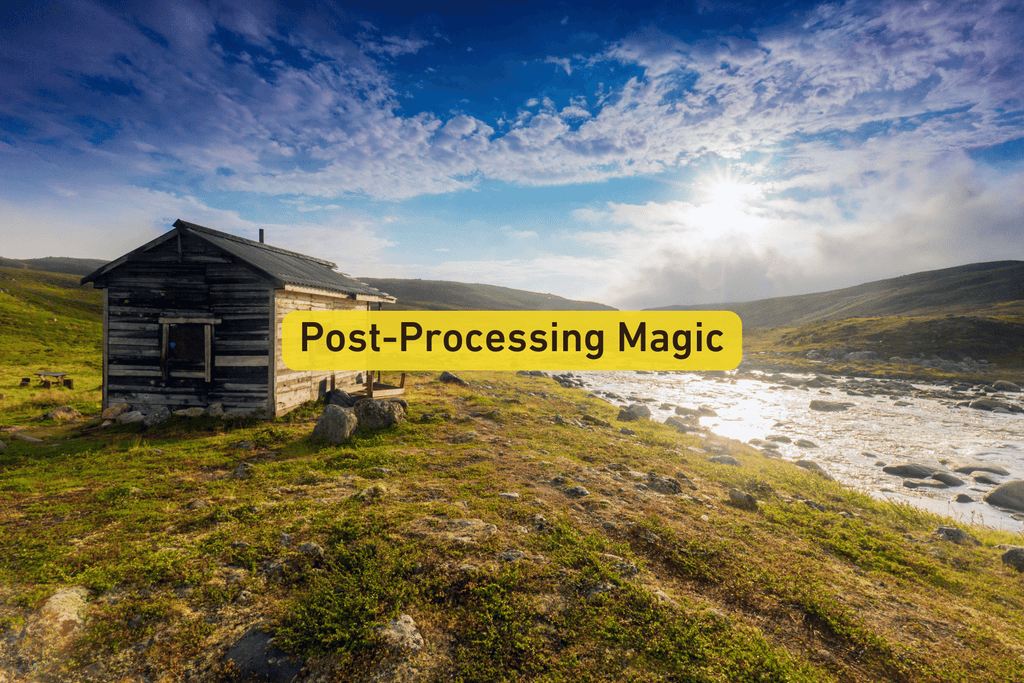
Post-Processing Magic
Post-processing isn't just about touching up your shots; it's a chance to enhance the mood and atmosphere of your images. Start by considering the mood you want to convey. Abandoned places are already rich with emotion, but with post-processing, you can take it a step further. Think about adding a vintage touch to your shots, giving them a timeless, nostalgic feel.
Desaturation is another technique to create a more subdued, contemplative ambiance with muted colors. Doing this can add depth and soul to your photographs, drawing the viewers into the stories you've captured.
Remember that post-processing doesn't mean changing what's real; it's about bringing out the essence of your photos. So, don't hesitate to get creative! Experiment with various filters, tweak the contrast and brightness, or add a subtle vignette to guide the eye to the center of your image.
Related article: Everything Looks Better in Black & White – Tips for Better B&W Photography
And pay attention to the little details. You can eliminate distracting elements, fix imperfections, and fine-tune the composition to make your images stand out.
But here's the golden post-processing rule: do what is necessary. The goal is to enhance the image's mood, not drown it with effects. Subtlety is your friend; a gentle touch can work wonders.
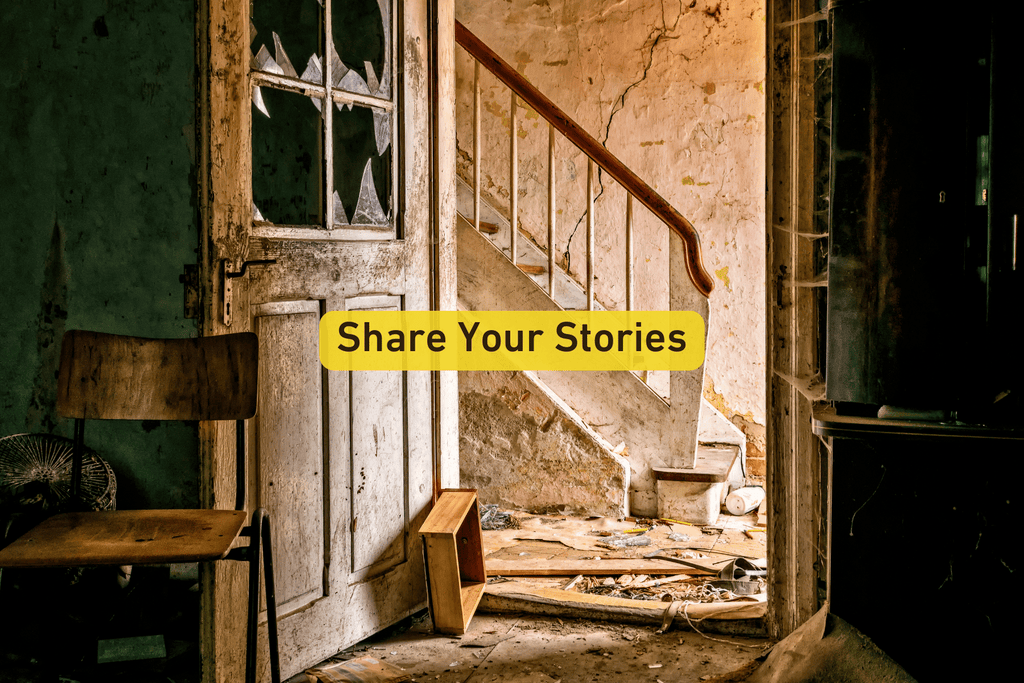
Share Your Stories
Use this opportunity to share your unique photos on social media. Recount the stories of abandoned places that you've uncovered. Describe the eerie scene, the strange sounds you heard, and the goosebumps that crept up your spine when you turned a corner to find something unexpected. These tales add depth and personality to your photography.
You're turning the mundane into the magical and the ordinary into the extraordinary through your passion, dedication, and creativity. Keep exploring, keep sharing, and keep turning history into breathtaking art.
Ready to explore and document the forgotten? Remember to share your abandoned place photography with us. We can't wait to see your amazing shots!
Related article: Symmetry and Symmetrical Framing
Related article: Textures: The Unsung Heroes of Composition
Related article: Reflections in Photography
Related article: The Psychology of Photography
Related article: 8 Tips for Better Visual Storytelling

